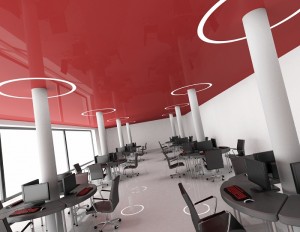Our VP, Kate Canada Obregon, recently wrote a guest blog post for The Agency Post sharing Five Tips for Making Your Office A Creative Space, but where did the idea for an open office floor plan come from?
In her latest article for The Agency Post, she discusses The Effects of an Open Office Floor Plan:
Here are some excerpts:
“…one of the office features we often mistakenly attribute to startups is the open office plan. We tend to equate this setup with the startup attitude of free-flowing space, an open atmosphere and equality of space. But for 60 years, the open office floorplan has been both the standard and ideal for office design. Mirroring economic changes since the 1950s and into the 1990s, architects have designed work environments for the booming “knowledge industries,” spaces where people create and produce ideas as part of their company bottom lines.
Symbolically speaking, people like to work in open office spaces, because they report feeling connected to the company’s organizational mission and to their fellow office mates. These spaces do well at creating “communities.” And while the research shows that intangible benefits are apparent, studies conducted by organizational psychologists on large corporations show mixed results on measures of productivity. Workers in open plan offices complain most often about noise, loss of privacy and constant distraction.
We cannot create without other people. We are social animals. Some philosophers and scientists argue that physical and sensorial evocative environments act like our scaffolding into the world, giving us humans opportunities to deepen our brain activity and expand into the world. When building an environment that supports and amplifies creativity, though, it’s important to keep in mind that the best solution usually isn’t an open floor plan.
Creative spaces require different setups for different mindsets: fun areas for unconscious processing; reflexive spaces where minimal thinking can go on, and reflective spaces wherein people must go beyond superficial thinking to find those kernels of creative thinking.
